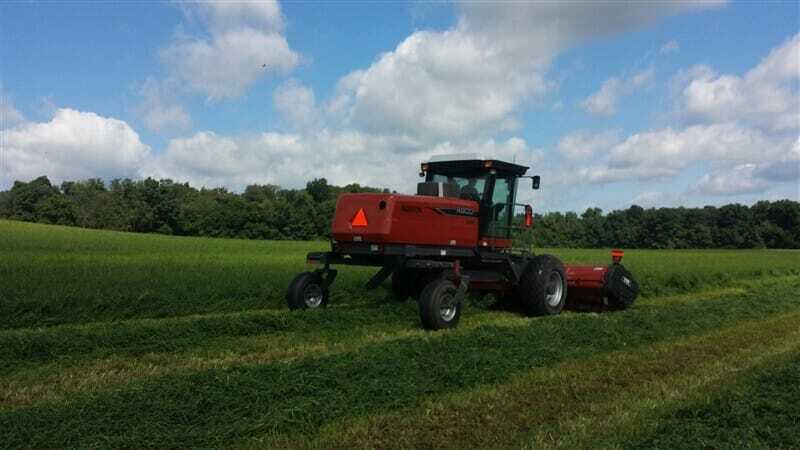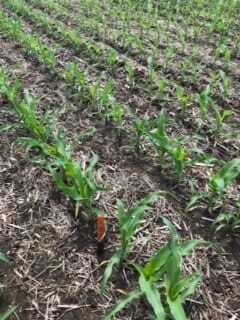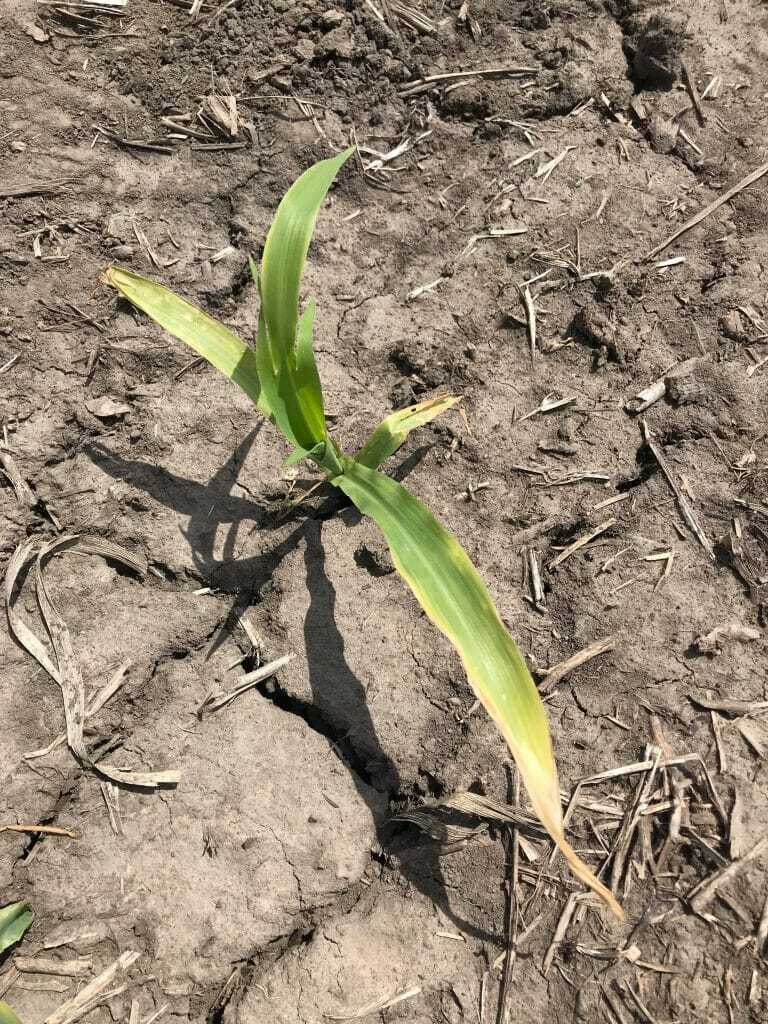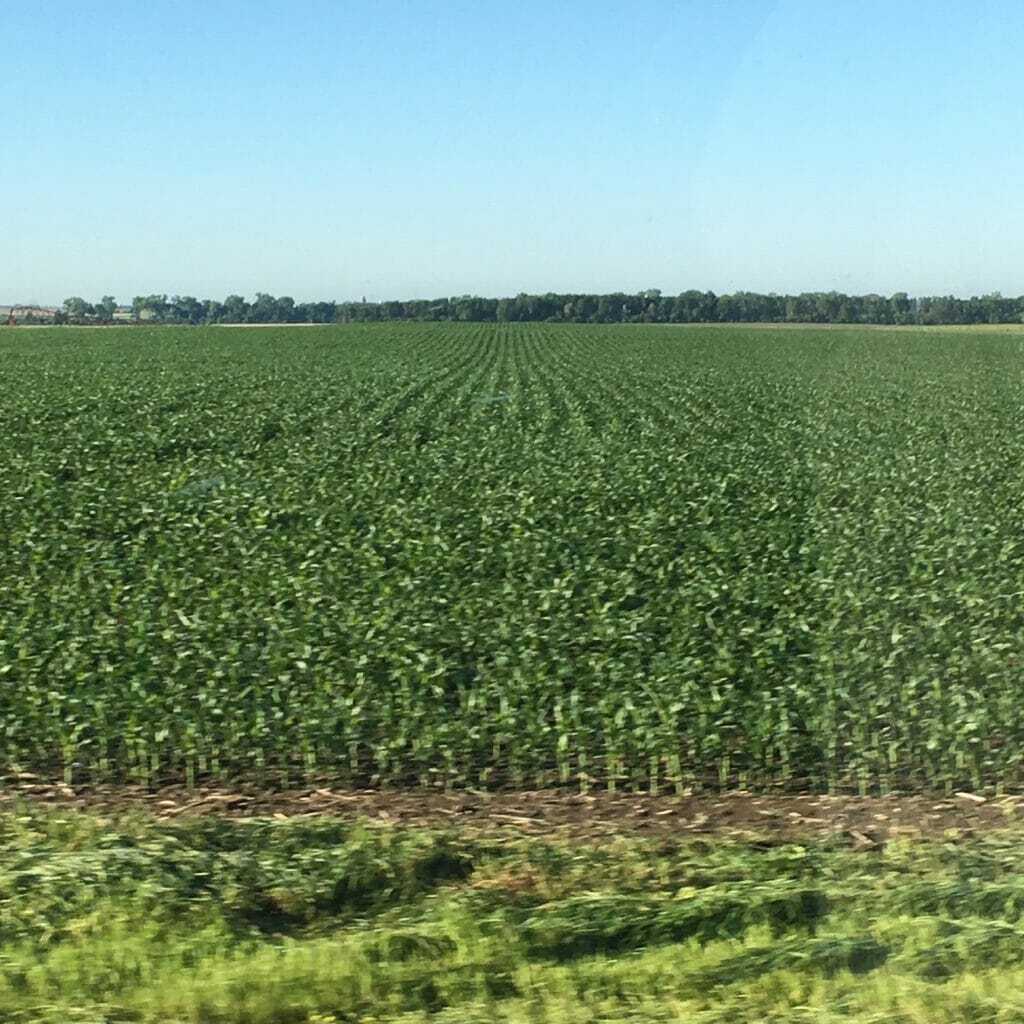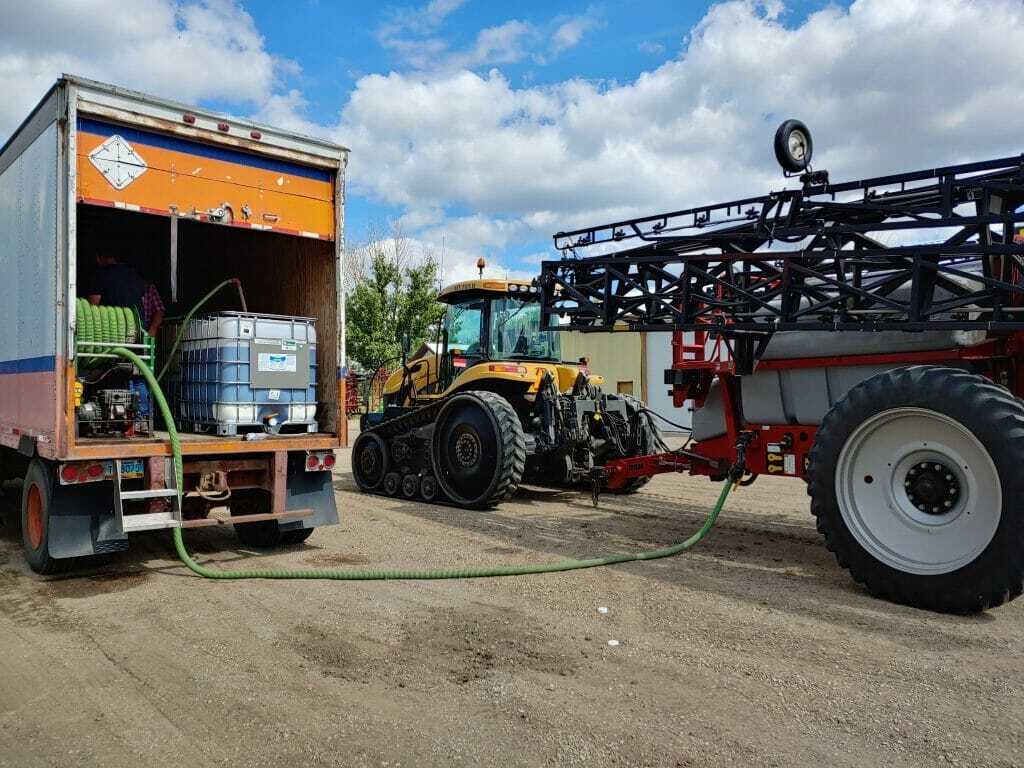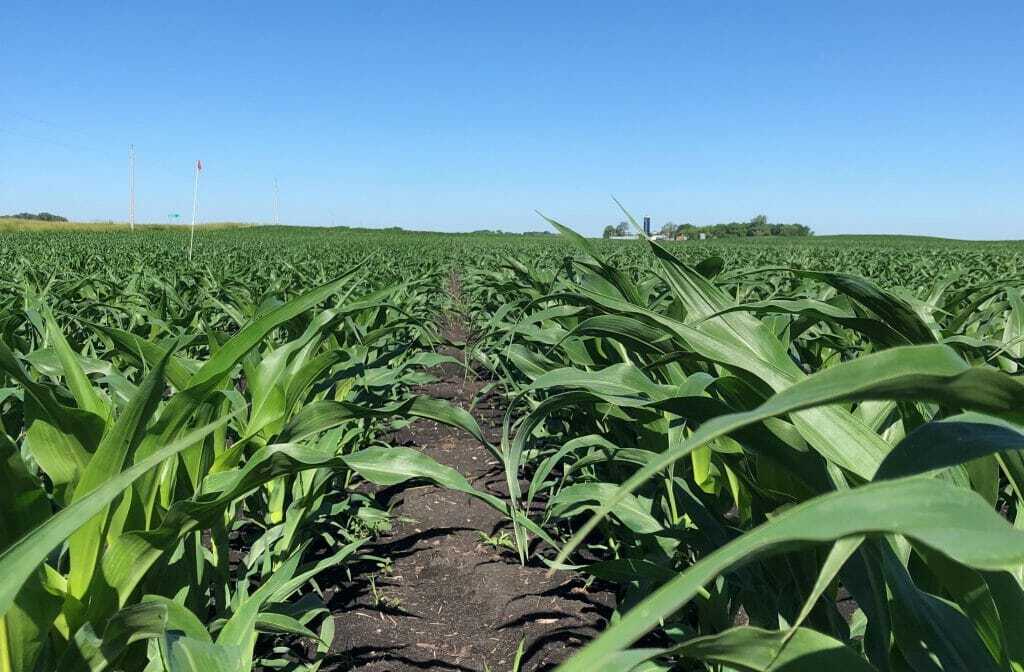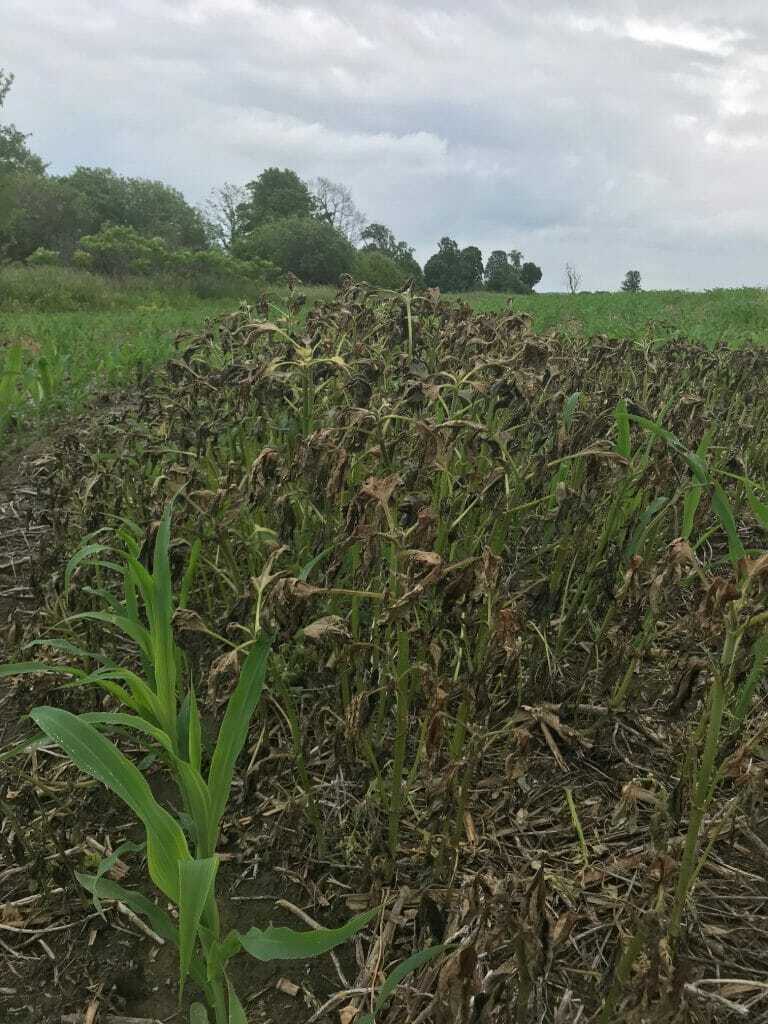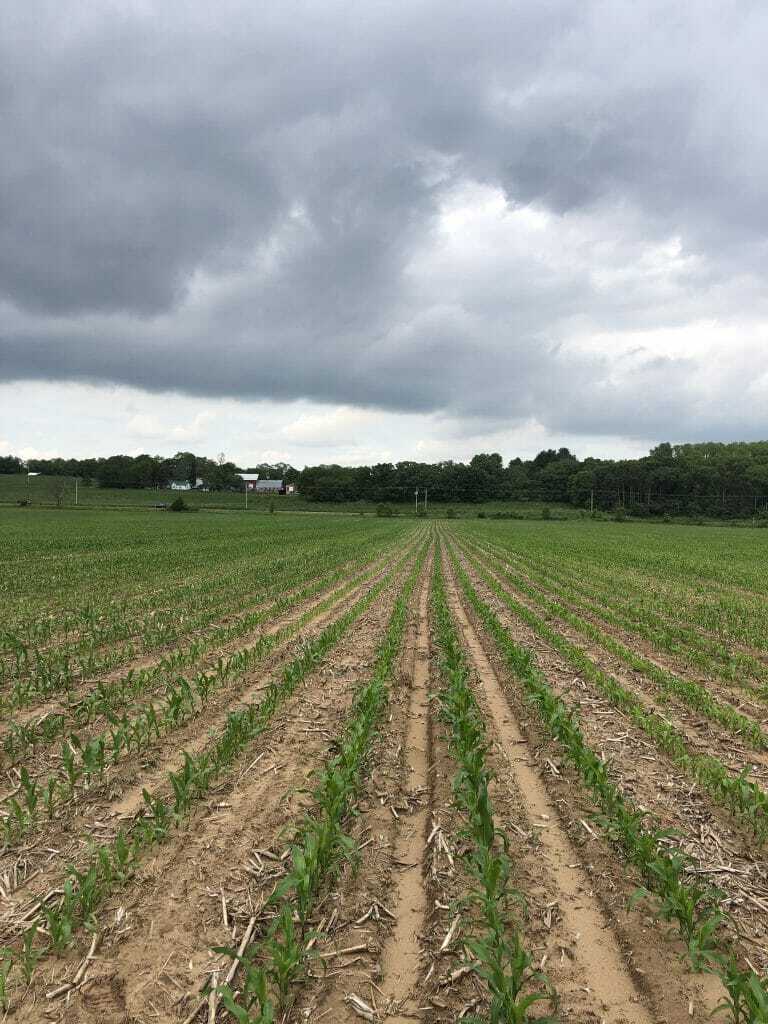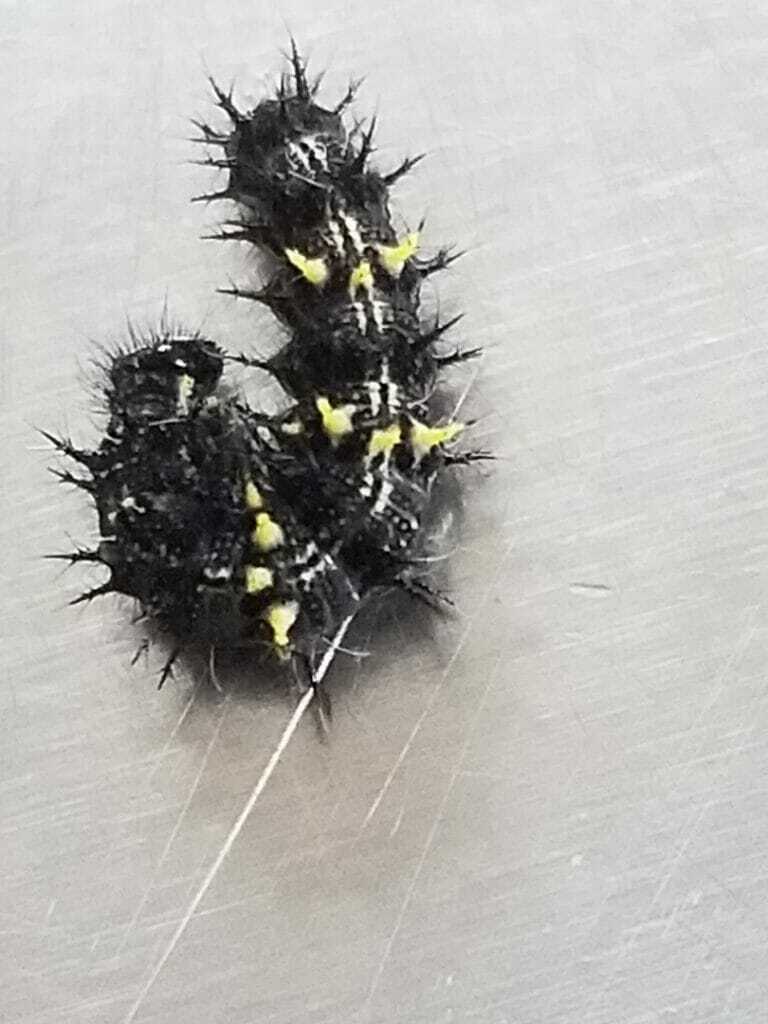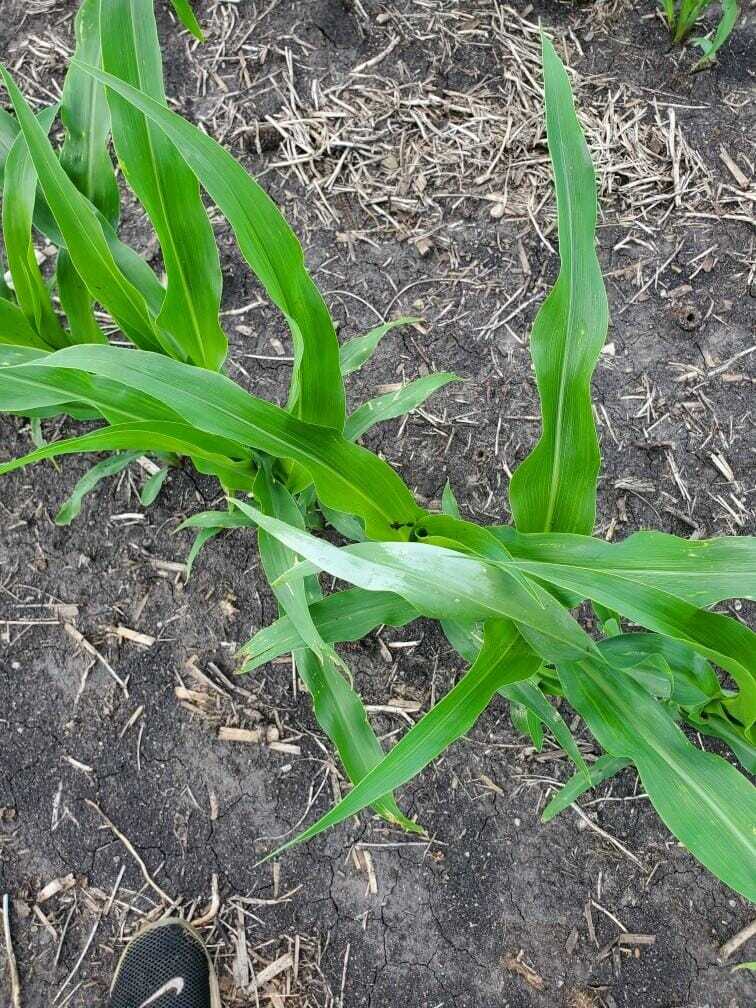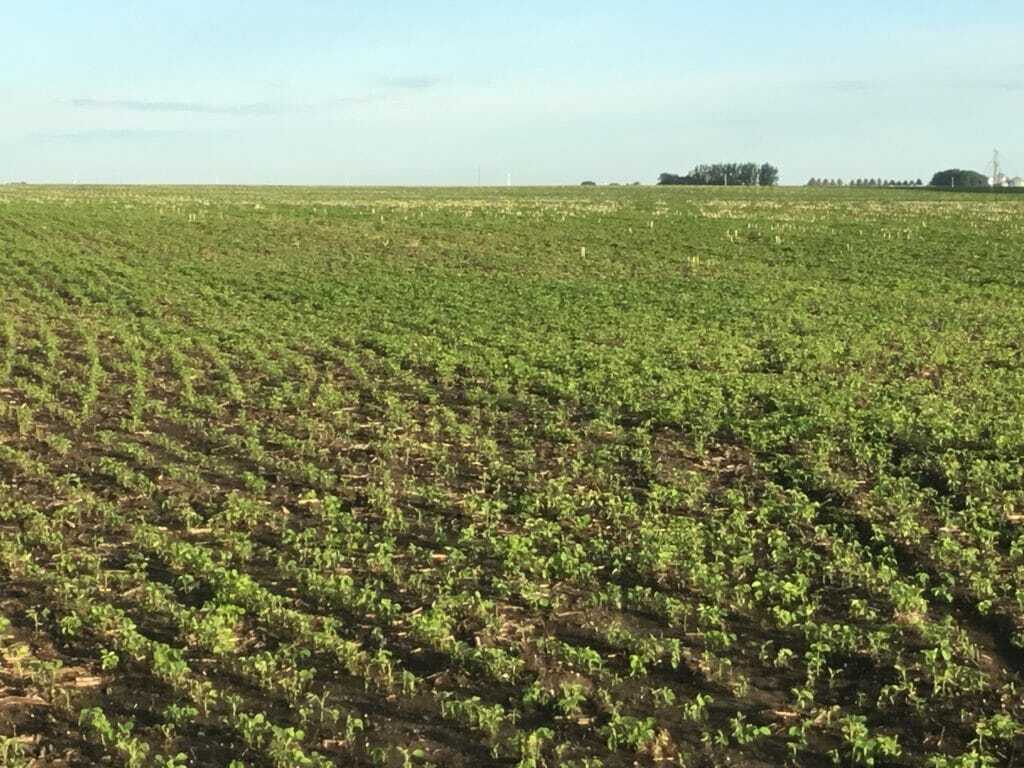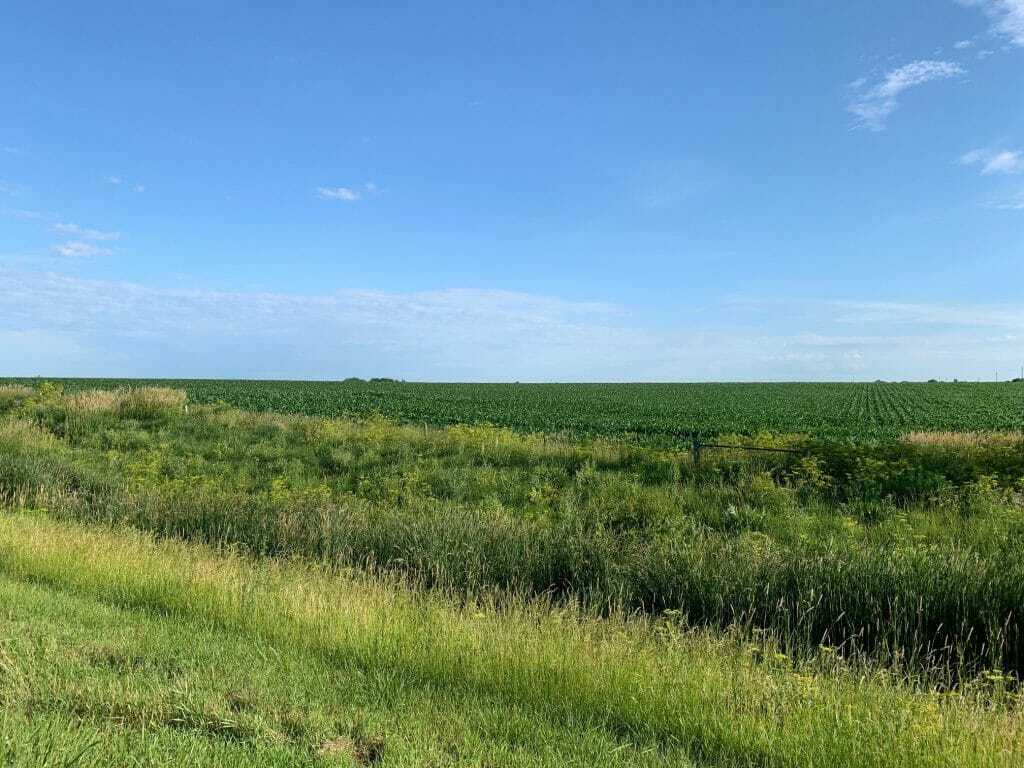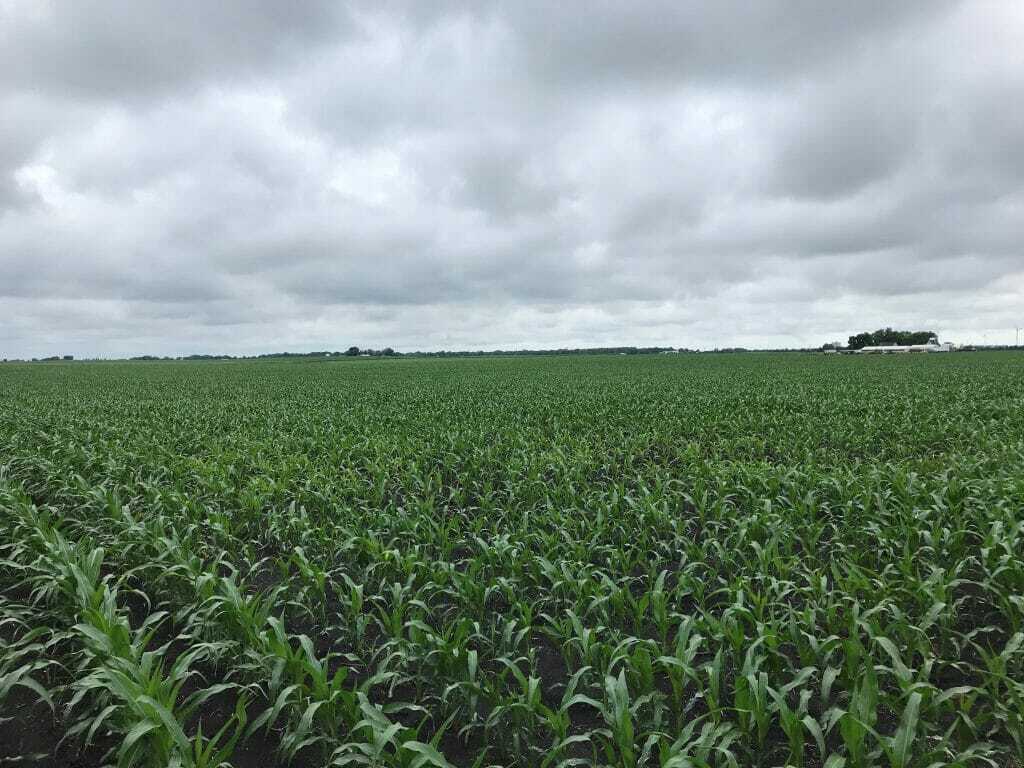Eastern North Dakota
Brian McNamee
One of my favorite times of the year is upon us. One of the best smells in agriculture or in my opinion, anywhere. First cutting alfalfa!
Delays in cutting is literally like a road map. Virtually zero hay cut in the south and east part of my region and well over 50% in the north and the west. It follows the moisture and the planting delays.
Southeast North Dakota
Gary Geske
This photo shows LH 3937 VT2 PRO RIB in a Latham SuperStrip™ plot east of Enderlin, North Dakota. Strong emergence scores and good early growth despite these cooler temps are helping all the Latham hybrids this spring.
North Dakota Agricultural Weather Network (NDAWN) recording sites are tracking heat units for corn growth, and it’s no surprise that heat units are way behind this year. The location at Lisbon has registered only 529 growing degree units (GDUs) since May 1, which is only 60% of last year at this time. Hopefully, warmer overnight temps will help bring this year’s crop to maturity.
Northeast South Dakota
James Keltgen
The main crop planting in is finally over in Northeast North Dakota. Now farmers with prevent plant acres are rushing to plant forages with the earlier harvest date set by the USDA. Warmer weather is expected this week, and heat is needed to move maturity along as all crops are lacking GDUs (growing degree units). Some herbicide damage is evident in corn due to the lack of growth and slow metabolization of herbicides. Soybeans should be flowering but also have been slow to progress due to the cooler weather. Remember to check herbicide application dates as many need to be applied shortly due to date and growth stage restrictions.
Southeast South Dakota
Ramie Coughlin
Surprisingly, last weekend we welcomed rain. Some farmers needed surface rain to break crusts and help seedlings emerge. The week also came with cooler temperatures. The 10-day outlook should be favorable corn growing weather, so we hope to see great progress. Many corn fields are close to canopy while others have a ways to go. I expect to see cover crops going in as a great option for all the prevent plant acres. Seed supply is tight, so contact your Latham® Dealer ASAP to reserve seed.
Northern Minnesota
Ken Highness
Proper weed management is critical. Apply herbicides correctly by following guidelines for proper application methods and rates. Remember, timing of application is critical. Remain vigilant in your fight against weeds all season long. Pictured here is a farmer near Horace, ND, filling his tank with Enlist Duo. He’s spraying a field of Latham 0995 E3.
Southern Minnesota
Justin Prokosch
LH 5245 VT2 PRO stands out like a rock star in Southwest Minnesota. Heat in the extended forecast will be very beneficial for our crops this week.
Northern Wisconsin
Joe Salter
The Northern Wisconsin crop looks better every day. Warmer days with scattered rain are in the forecast. The crop is popping out of the ground and making great gains. Weed issues also surfaced last week as you can see in this field planted to Latham® LH 4452 RR. The biggest weed issue is giant ragweed. Giant ragweed, which grows taller than corn in search for sunlight, is considered one of the most competitive weeds in our agronomic crops. Giant Ragweed has also shown herbicide resistance. This field was sprayed one week ago, so it will get special attention over the next week to make sure this competitive weed does not survive.
Southern Wisconsin
Greg Mair
With excessive moisture falling across the region this spring, we’re seeing nutrient deficiencies and compaction in corn. Sulfur is not available on the lighter, sandy soils, causing light green variable stands across fields.
It’s important to walk fields this time of year to address issues before significant yield loss occurs. We’re spraying soybean stands in southern Wisconsin for Thistle Caterpillars.
North Central Iowa
Cory Greiman
This leaf discoloration appears to be from frost damage, but we haven’t had any sub-32 degree temperatures. It is a result from rapid temperature change. We’ve seen spring temps range from the low 90s to the mid-40’s with high humidity, giving corn the appearance of frost damage.
Northeast Iowa
Craig Haaland
This field of Latham’s popular Latham® 2186 Liberty Link soybean in North Central Iowa looks really good. Overall, soybeans are looking pretty good throughout my territory. Corn fields are coming around, but there are many drowned out spots. Farmers are spraying and scouting fields.
Northwest Iowa
Darin Chapman
This stand of LH 5635 VT2 PRO has great potential. Late planting and excess rainfall create perfect conditions for weed pressure, so I’m hoping the post application herbicide will take care of weeds until a good canopy is established. Late-season fungicide applications will also protect corn yield.
Eastern Iowa
Jerry Broders
The crop is progressing in Eastern Iowa. We are well into the next phase of planting season of spraying, side-dressing and scouting.
Western Iowa
Larry Krapfl
Excess rain fall causes more low lying flooding across our whole territory.
Central Iowa
Bryan Rohe
This field of late-planted soybeans near Oskaloosa could start flowering in two to three weeks.

